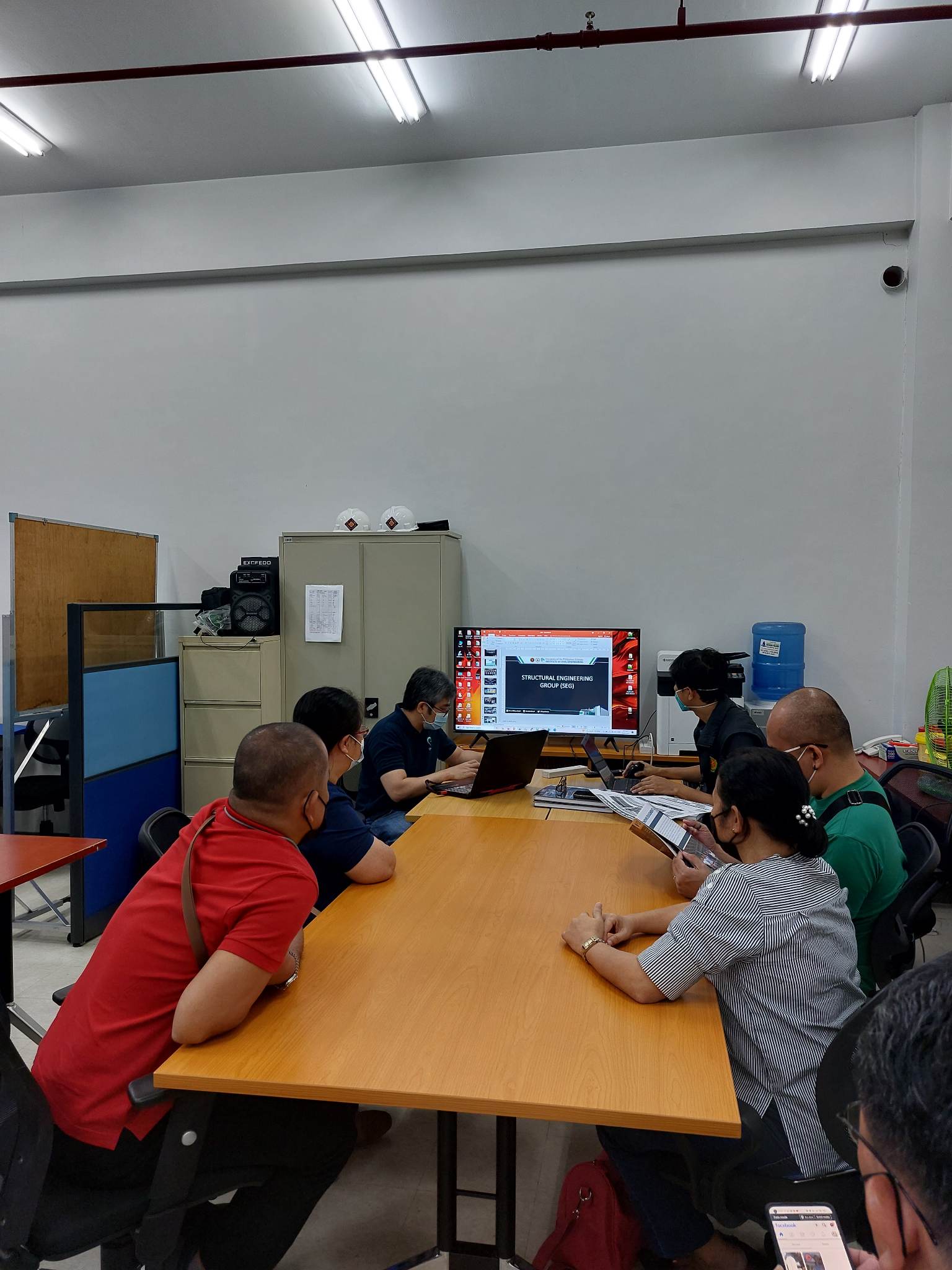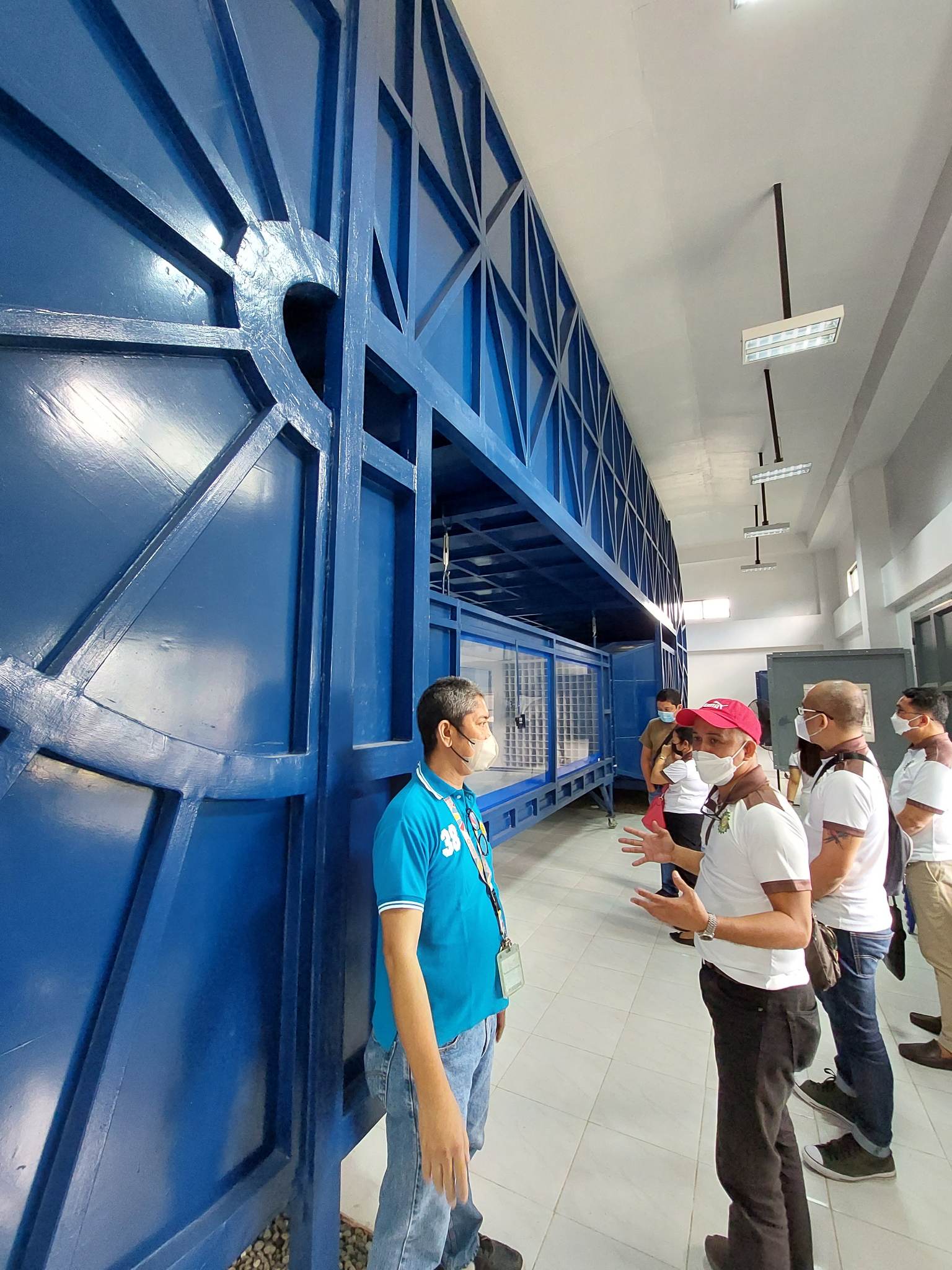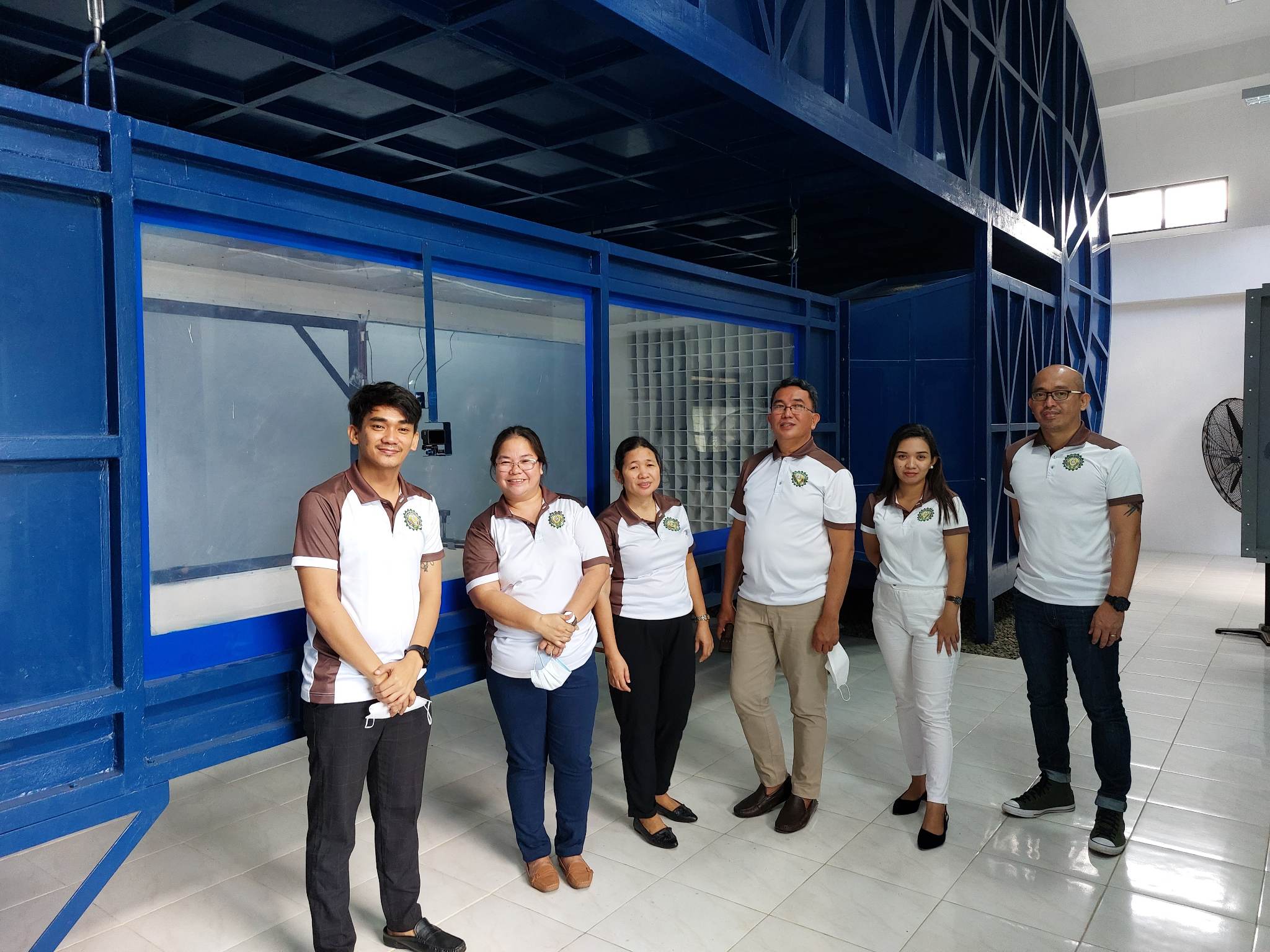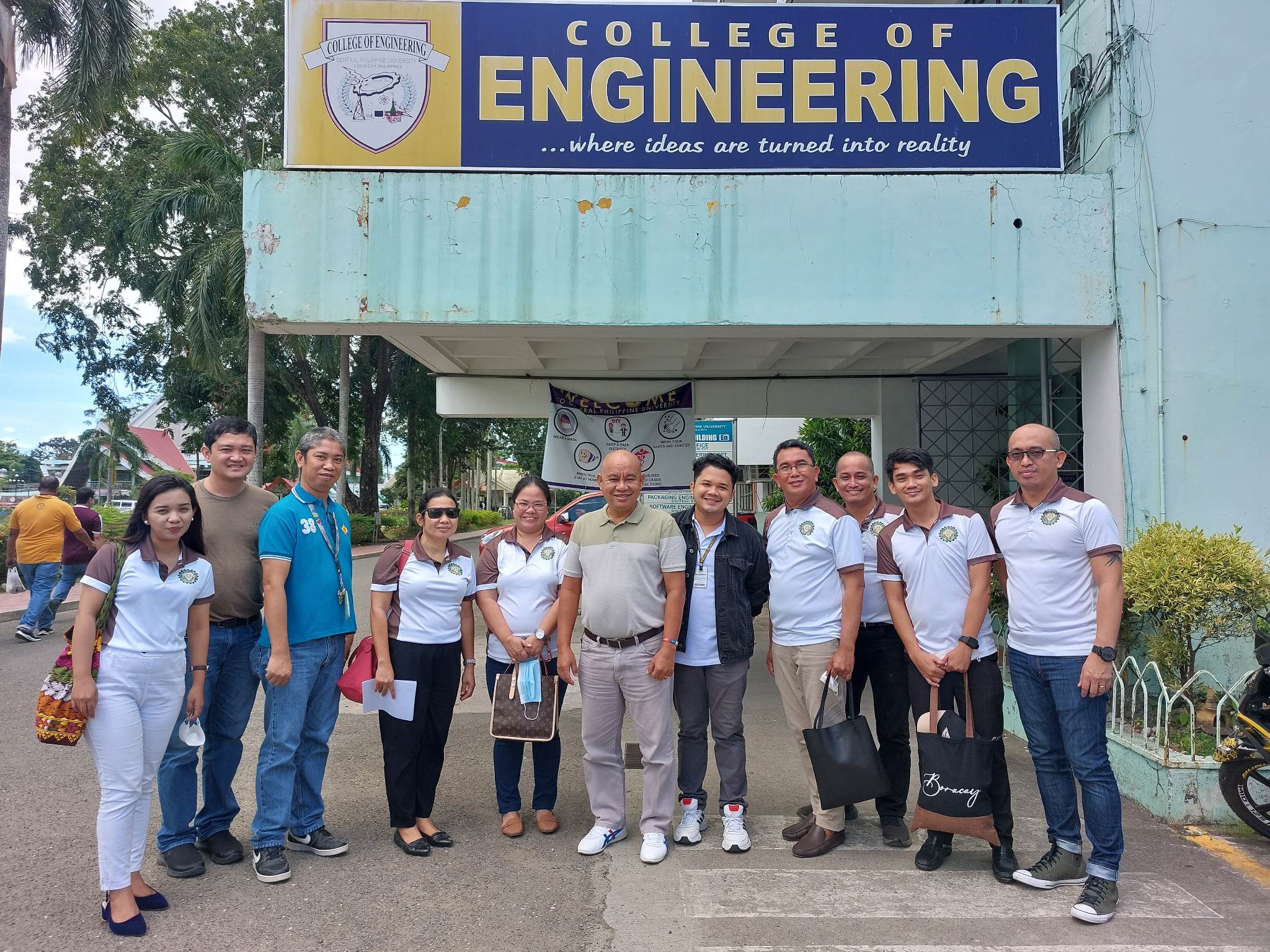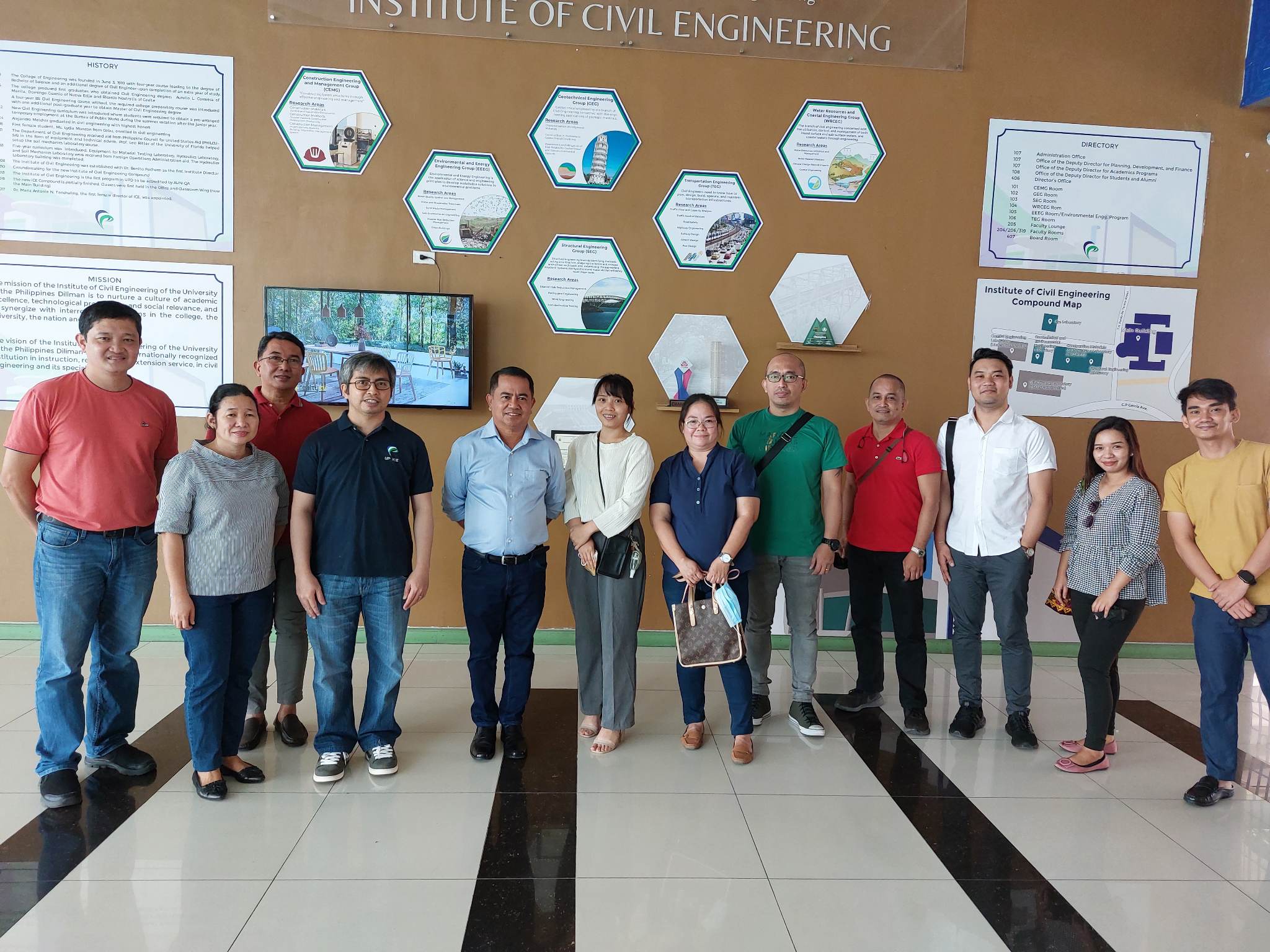The Typhoon Engineering Team of Eastern Samar State University (ESSU), spearheaded by Dr. Andres C. Pagatpatan Jr., University President, Dr. Lito D. Lacaba, Vice President for Research and Extension and Dr. Rhodora C. Mendoza, Vice President for Administration, visited De La Salle University, University of the Philippines Diliman, and Central Philippine University-Iloilo last March 13-17, 2023. The team, comprising 11 faculty-researchers, including Dr. Ernesto T. Anacta, Program Leader, Engr. Charito Sabate, Project Leader, Dr. Helen Fuentes, Director for Externally Funded R&E, Ar. Azel Omar Operario, Engr. Condrado Baleña, Engr. Maria Rizzalyn Cabong, , Prof. Eduardo Lingan, Prof. Niel Francis Casillano, Engr. Carlota Salas, Engr. Jacobe Godino, and Dr. Jeffrey Co discussed with the aforementioned universities a collaborative program to establish a boundary layer wind tunnel facility in ESSU.
It is worth highlighting that ESSU is known for hosting the Integrative Conference on Disaster Risk Reduction and Management (ICIDRRM) annually. The conference commenced in the aftermath of the catastrophic Typhoon Yolanda, and the university has since been at the forefront of disaster management and risk reduction initiatives in the Province of Eastern Samar.
The program, called HIRROTE (Hazard Identification and Risk Reduction through Operational Typhoon Engineering), is set to transform the way engineers and researchers approach the challenges posed by typhoons. The term "hirote," derived from the Waray-Waray language, means "to take care of," perfectly encapsulating the program's objective of ensuring the safety and well-being of communities vulnerable to typhoons.
The HIRROTE program will establish a boundary layer wind tunnel facility which is a crucial piece of equipment for testing the structural integrity of buildings and infrastructure in typhoon-prone areas. By simulating typhoon conditions, researchers and engineers can identify weak points in a structure's design and make necessary adjustments to ensure it can withstand the destructive forces of a typhoon. Wind tunnels can also be used to evaluate wind loads on various structures during a typhoon, design emergency response equipment and early warning systems, and improve typhoon forecasting. By utilizing wind tunnels, the program aims to enhance our understanding of the behavior of high winds and gusts, equipping us to respond to typhoons more effectively.
The team's visit to De La Salle University, University of the Philippines Diliman, and Central Philippine University-Iloilo marks a significant milestone in the establishment of the Typhoon Engineering Research Center in ESSU. The team engaged in fruitful discussions with representatives from these institutions, exploring avenues for collaboration and knowledge sharing. The program, once finalized, will be submitted to the Department of Science and Technology through its NICER Program, opening doors for funding opportunities for the project.
